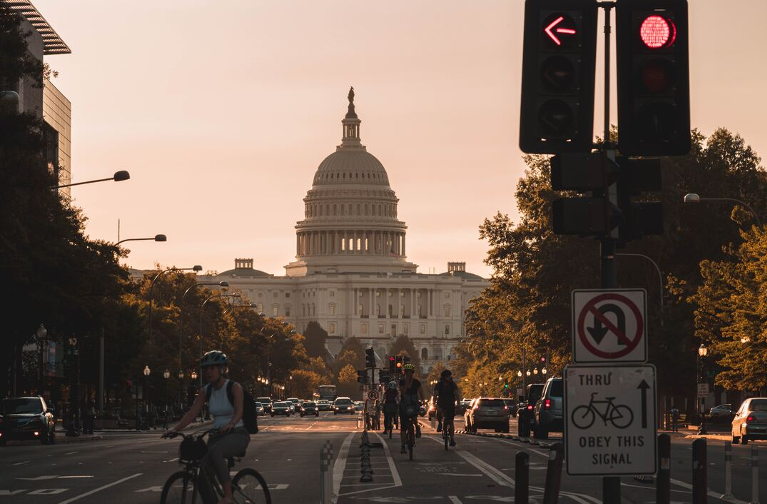House Minority Leader McCarthy (R-CA) has gone on record warning conservative Republicans that they are in danger of losing the support of voters under the age of 35 over the issue of climate change. To counter the Democrat’s talk of the Green New Deal and the Climate Leadership and Environmental Action for our Nation’s (CLEAN) Future Act released by Democrats on the House Energy and Commerce Committee, the Minority Leader called upon Republican House members to show they too care about the future of the planet by introducing their own brand of climate-related legislation.
The first tranche of McCarthy’s promised legislation has now been announced. Although modest by comparison to the magnitude of the problem and the Democrats’ CLEAN Future Act, the mere mention that Earth’s warming poses a problem is extraordinary given the denialist position of McCarthy and other Congressional conservatives just a few short months ago.
McCarthy and several House Republicans have led off their defense of the environment with a suite of proposals focused on carbon capture. Carbon capture is a natural or artificial process by which CO2 is removed from the atmosphere and held in solid or liquid form.
Nature captures and stores carbon through photosynthesis. Trees are particularly good at storing carbon, but they are not the only natural means. Sustainable soil management practices, e.g., planting cover crops, no-till seeding, switching to crops with deeper roots, and allowing fertile fields to lie fallow for periods, can also contribute to reductions of atmospheric CO2.
To marshal nature’s resources Representative Bruce Westerman (R-AR), along with McCarthy and a dozen other Republicans, are introducing into the House the Trillion Trees Act[i]. The goal of the Act is to plant 330 million trees a year for the next 30 years. It’s a measure that President Trump endorsed in January at the World Economic Forum in Davos and again in his recent State of the Union. The legislation also encourages the innovative use of wood products in construction as a substitute for concrete and steel, which take a heavy toll on the environment.
According to the World Resources Institute (WRI), every acre of land restored to a temperate forest can sequester about three metric tons of CO2 per year. These approaches can be relatively inexpensive (generally less than $50 per metric ton) and yield cleaner water and air in the process.
Carbon capture technology is still in a nascent stage. It’s not at all clear that the current technologies are reliable nor that they can be cost-competitive once perfected. Representative Crenshaw (R-TX) has introduced H.R. 5864 to establish and support the research, development, and demonstration of advanced carbon capture and utilization technologies, while Representative David McKinley (R-WV) is the lead on H.R. 5865 to advance technologies for carbon capture, utilization, and storage. Both bills have been referred to subject matter committees, e.g., the House Committee on Energy and Commerce[ii].
The one place that direct air capture of carbon makes some economic sense is in enhanced oil recovery. Pumping captured CO2 into oil wells can release trapped reserves while leaving the CO2 in the ground. WRI estimates that each ton of captured CO2 can produce as much as two to three barrels of oil. At a price of $60 per barrel and the soon to be available federal performance-based tax credit[iii] of $35 per ton of CO2 the process can pay for itself. Representative David Schweikert (R-AZ) put forward H.R. 5883 a bill to expand and make permanent the 45Q carbon capture tax credit.
Taking carbon out of the air or from seawater is energy-intensive. Enhanced oil and gas recovery also poses the dilemma of supporting the continued use of fossil fuels. Using renewable energy sources like solar and wind, along with continued efforts to increase the efficiency with which fossil fuels are used, can help to ameliorate the downside of enhanced recovery.
Despite carbon capture’s technological problems, it is hard to imagine staying below the 1.5 to 2 degrees Celsius threshold without some form of capture and sequestration. (Figure 1) The issue is whether it can be done economically at scale.
In the next tranche of climate-related proposals, McCarthy and friends are likely to emphasize community resilience and adaptation to climate change; increasing amounts of carbon-free electricity through nuclear, hydro and advanced solar and wind technologies; and, reducing the use of plastics—as well as finding sustainable ways to recycle it.
McCarthy’s efforts have engendered harsh pushback by conservative organizations that are far from ready to acknowledge that Earth’s warming is a problem or that human activity has anything to do with it. The American Energy Alliance, a pro-market energy advocacy group, has dismissed Westerman’s proposal as a Republican “climate messaging exercise.”
Myron Ebell, of the Competitive Enterprise Institute and the leader of Trump’s EPA transition team, has questioned the ecological consequences of planting a trillion trees and wonders where on Earth they could be planted? He also believes that taxpayer subsidies, e.g., tax credits and research dollars, for enhanced CO2 recovery, sets a bad precedent.
In regard to the Enhanced CO2 Sequestration Tax Credit Act: if permanent taxpayer subsidies for one commercially uncompetitive technology is a good idea, then it’s not clear why it’s not a good idea for other technologies that failed in the free market like ethanol, wind, and solar.
Ebell doesn’t credit the US Energy Information Administration (EIA) prediction that new electric generating capacity (US) in 2020 will come primarily from wind and solar, or that lenders and investors are swearing off of fossil fuels.
According to the International Institute for Sustainable Development (IISD) coal, oil and gas get more than $370 billion a year in support worldwide, compared with $100 billion for renewables. Ten to 30 percent of those subsidies would pay for a global transition to clean energy.
David McIntosh, President of the Club for Growth PAC, minced no words when he declared his opposition to eco-McCarthyism.
Besides hurting our economy, these measures will…only alienate conservatives across the country. America’s economy is booming because of the tax cuts and deregulation under President Trump, and Republicans should consider free-market legislation to increase growth as opposed to trying to get the political support of green socialists.
McIntosh is probably right about McCarthy’s risking the support of conservatives—at least establishment conservatives. Where he’s wrong is in thinking that the Minority Leader and his allies in the House are looking to get the support of green socialists.
What McCarthy and company are worried about is losing the support of the 20 or 25 percent of young Republicans who believe strongly enough that climate change is real and whom pollsters are saying care enough about this one issue to vote Democratic in November. In what promises to be a close election, the loss of young voters could be the difference between victory and another blue wave loss for Republicans.
McCarthy is risking his leadership position with his stance on global warming. He and his allies have challenged Congressional Republicans and the president to take an evidence-based stand on climate change. A challenge that will be hard to ignore. Whether he will be thanked for it or vilified, only time will tell.
[i] There is no bill text available as of the date of this article.
[ii] There is no bill text available as of the date of this article.
[iii] The credit was passed in 2018 as part of the Bipartisan Budge Act of 2018, however, the Internal Revenue Service has yet to release the final guidelines.







